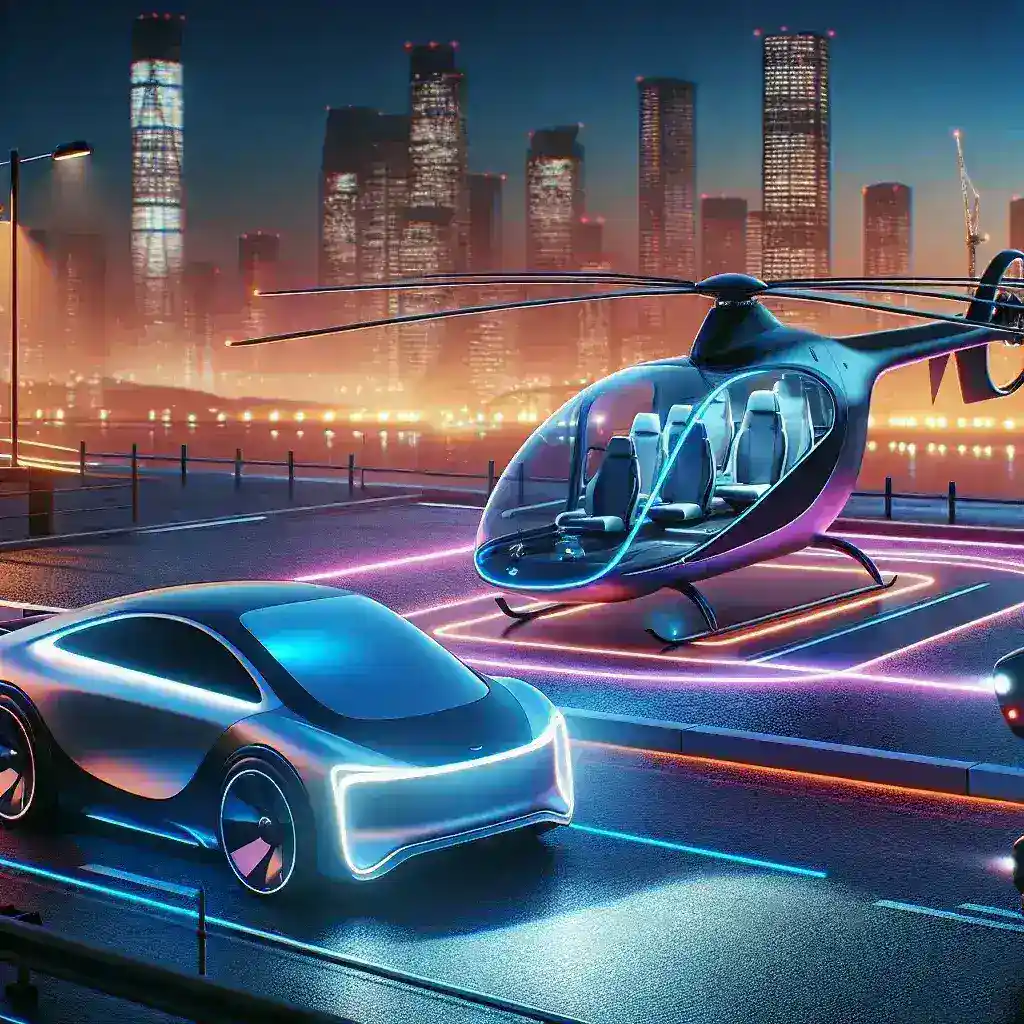Uber and Joby: A New Era in Urban Air Mobility
In a game-changing announcement, Uber has signed a strategic deal with Joby Aviation, paving the way for helicopter ride integration set to launch in 2026. This partnership signifies an important evolution in urban air mobility (UAM) and promises to reshape the landscape of transportation in major cities worldwide.
Understanding the Partnership
Uber, known for its innovative ride-hailing app, is venturing into the skies with Joby Aviation, a pioneer in electric vertical takeoff and landing (eVTOL) aircraft. This collaboration aims to integrate Joby’s advanced helicopter technology into Uber’s existing transportation network, allowing users to book air taxi rides effortlessly through the Uber app.
What is Urban Air Mobility?
Urban Air Mobility refers to the use of air transportation systems in urban environments, offering a solution to the problems of traffic congestion and long commute times. With Joby’s state-of-the-art helicopters, which are quieter and more environmentally friendly than traditional aircraft, this deal marks a significant step towards making aerial ridesharing a reality.
The Historical Context
The concept of urban air mobility is not a new one. For decades, visionaries have dreamed of a future where flying taxis would alleviate the burden of road traffic. Companies like Uber and Joby are now turning this dream into reality. Joby has been developing its eVTOL aircraft since 2009, with significant advancements allowing it to gain regulatory approval.
Key Features of Joby’s Aircraft
- All-Electric: Reduces carbon emissions significantly.
- Quiet Operation: Designed to minimize noise pollution, making it suitable for urban environments.
- Speed: Capable of reaching speeds of up to 200 mph.
- Range: Can cover distances of approximately 150 miles on a single charge.
Future Predictions
As we look towards 2026, the integration of Joby’s helicopters into the Uber platform is expected to revolutionize urban transport. Analysts predict that rapid advancements in technology and infrastructure will lead to:
- Increased Accessibility: More users will have access to aerial rides, making commuting more convenient.
- Job Creation: The growth of this new sector could result in thousands of jobs ranging from maintenance to piloting.
- Improved Traffic Conditions: A reduction in ground traffic can lead to faster travel times.
Pros and Cons of Aerial Ride-Sharing
Pros
- Efficiency: Aerial transport can significantly cut travel times.
- Environmental Benefits: Electric aircraft contribute to reduced carbon footprints.
- Innovative Technology: Advances in air travel technology enhance passenger experience.
Cons
- Cost: Initial prices for aerial rides may be higher than traditional methods.
- Regulatory Challenges: Navigating airspace regulations can be complex.
- Public Perception: Safety concerns may deter potential users.
Comparative Analysis: Air vs. Ground Transport
To better understand the impact of this partnership, let’s compare the traditional ride-hailing services with aerial taxi services:
| Criteria | Ground Transport | Aerial Transport |
|---|---|---|
| Time Efficiency | Variable, often affected by traffic | Predictable, less affected by ground congestion |
| Environmental Impact | Higher emissions | Lower emissions (electric) |
| Cost | Generally lower | Potentially higher |
| Accessibility | Widely available | May be limited initially |
Expert Opinions
Experts in the field of transportation and aviation have lauded the partnership between Uber and Joby. According to Dr. Emily Wright, a leading authority on urban air mobility, «This integration could be a transformative moment for city dwellers. The combination of Uber’s reach and Joby’s technology has the potential to make urban air travel accessible and practical for the average consumer.»
Real-World Examples
Joby has already conducted numerous successful test flights, demonstrating the feasibility of their aircraft in urban environments. Cities like Los Angeles and San Francisco are already being eyed as launch locations due to their existing traffic issues and enthusiastic tech-savvy populations.
Cultural Relevance of Air Travel
The idea of flying taxis has captured the imagination of many, often depicted in science fiction. Movies like «Blade Runner» and “The Fifth Element” have painted vibrant pictures of a future filled with airborne vehicles. Now, this vision is stepping closer to reality as companies like Uber and Joby work together.
Conclusion
The partnership between Uber and Joby represents a milestone in the evolution of urban air mobility. With the potential to significantly improve commute times, reduce environmental impacts, and redefine transportation norms, this collaboration is set to take flight in 2026. As technological advancements continue to pave the way for innovation, urban dwellers can look forward to a future where the skies might just be the next frontier of transportation.


